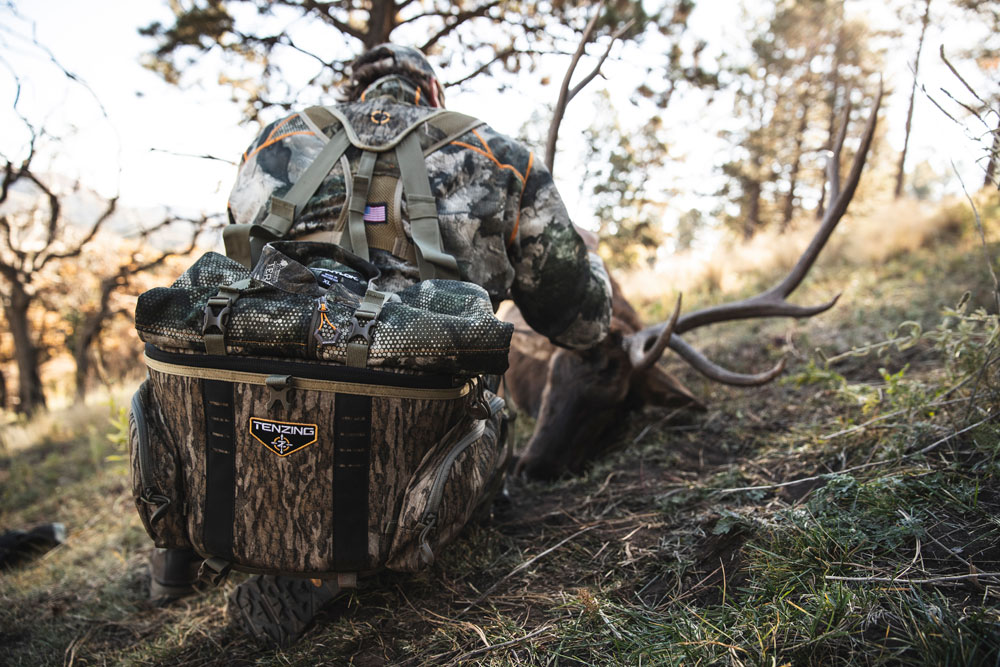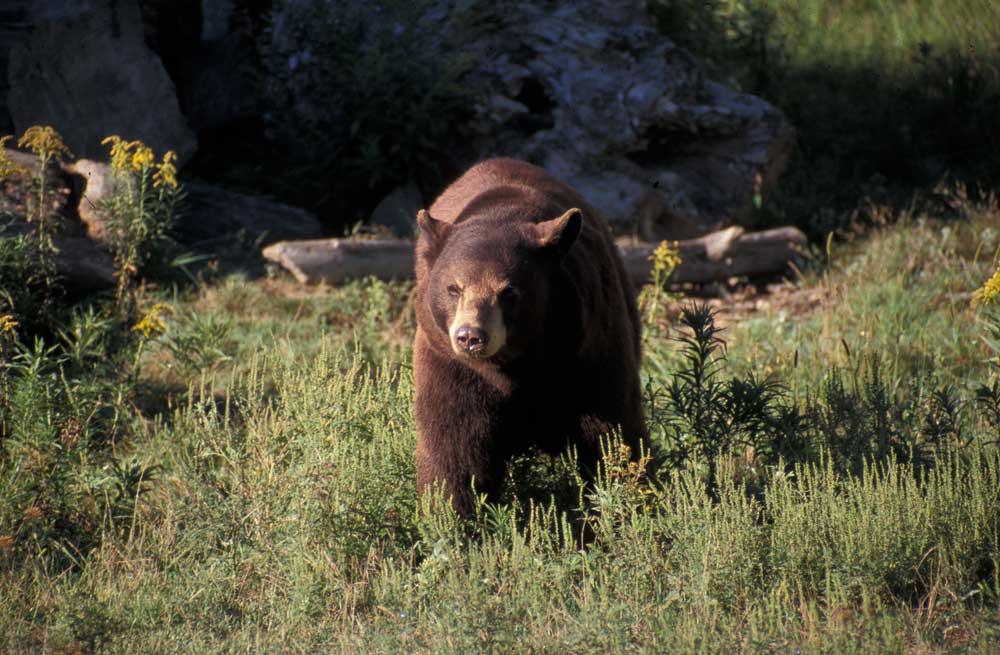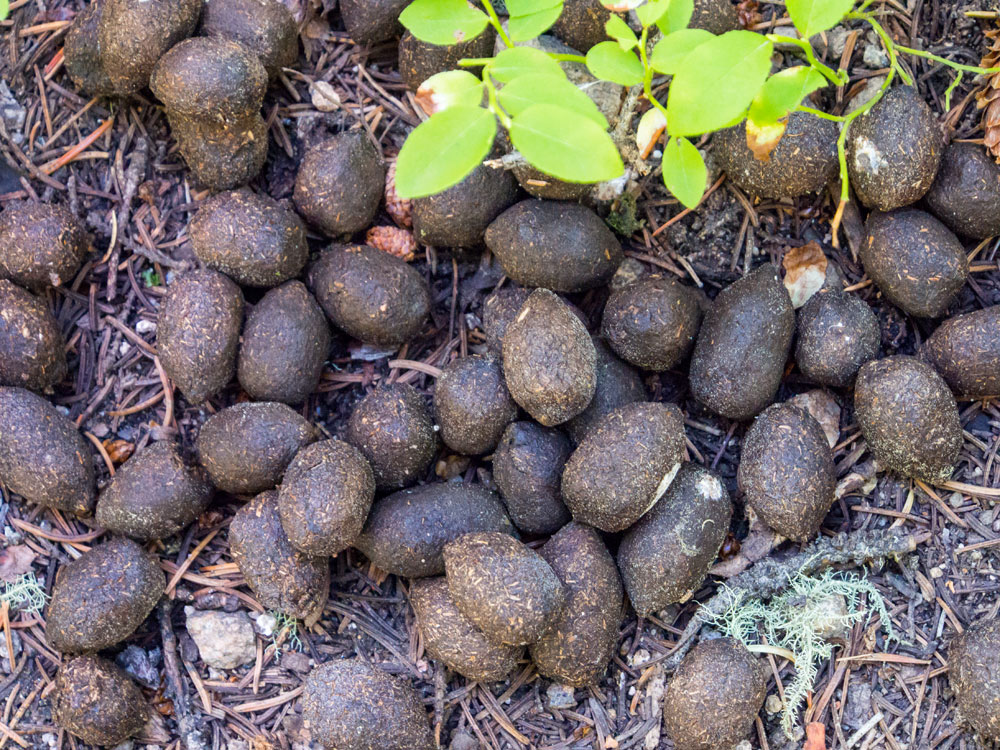When a hunter is going after big game in the U.S., they’re hunting elk, caribou, reindeer, musk oxen, mountain goat, bear, peccaries, pronghorns, deer or moose. Along with patience and skill, you also have to know animal behavior when it comes to bagging big game.
Knowing your prey’s eating habits and daily movements is crucial information to track and bag your next big trophy. One easy way to instantly learn these essential facts is by examining scat.
Many hunters examine scat closely, testing its firmness, smell, temperature and other variables that can tell them how long ago their prey passed by, what they’ve been eating and, sometimes, where they’re headed next.
To bag more game this hunting season, brush up on these key identification points when studying wild game scat. Here are telltale details on common dung you’ll see on the hunt and what fecal matter can tell you about the animal who made it.

Deer Scat
Whitetail or mule deer are popular prey and prized for their outstanding flavor and nutrient profile, making them an excellent choice of protein for many wild game recipes.
Deer excrete something that looks like Raisinets in the summertime when they can get to high-moisture edibles like berries, succulents and apples. In the winter, deer scat will be light brown and drier due to the deer’s cold-weather diet of fibrous, woody branches and bark.
If you find a lot of scat near a shaded area with recent scrapings nearby that reek of deer urine, you’ve probably stumbled upon a buck’s bedding area. The shinier the poop is, the more recently it left the deer.
Elk Feces
Elk poop looks a lot like that of deer, but bigger. Like deer scat, elk scat looks like individual ovals in the winter when the diet is sparser and more fibrous and lumpier and looser in the summer.
Elk, in particular, leave summer scats more like cow pies than what you might initially think of as deer scat. If you know what the elk are eating, you know where they are concentrating their grazing time and you can plan your hunt accordingly.
Pronghorn Deer Poop
Like most ungulates, pronghorn deer feces cannot be easily classified as either male or female. However, if you find an area of earth that’s been scraped up and that smells like urine, you may have located a pronghorn buck scrape.
The droppings from pronghorn look distinctive from their hooved cousins’ excrement because they stack one on top of another, like a fecal tower, and are smaller than deer droppings and oval like those from elk.

Bear Droppings
Bear scat is tubular with a passing resemblance to human feces, albeit longer, measuring between 5.5 to 12.5 inches. There’s sometimes one tapered end and one blunt end.
If the bear has recently eaten another mammal, you may detect remnants of the fur in the bear pile and it will have a foul smell that is slightly milder than a pet dog’s. If the bear has been sticking to more vegetarian fare, you will see partial berries, which can sometimes give you a sense of where your prey is feeding.
In the spring, bears are consuming as many calories as possible and moving very little to gain strength and weight after a long hibernation. If you find a couple of bear piles in one area, you can safely assume that you may have found the bear’s feeding grounds.
If you come back in the early morning or just at sunset with a strong pair of binoculars, you may be able to spot the bear rather quickly. Check your local and state authorities for information on bear hunting seasons, protected species and bag limits.
Turkey Excrement
Turkey poop is interesting because it’s one of the only species you can visually tell if a female or male turkey was the culprit. Male turkeys pass feces that are slightly J-shaped, whereas the females are more of an amorphous design. Both types of scat are ¾ inches in diameter and have white caps on the end because of the high uric acid levels.
Even though turkeys aren’t necessarily considered big game, their size puts them right on the border between big and small game classifications. If you find a bunch of feathers around some blobby or J-shaped turds at the base of a tree, you may have located a roost site.
Coyote Scat
Predators can be challenging to hunt, and it’s essential to identify the scat when you want to know how to hunt coyotes. The feces of a coyote, a virulent predator in some areas of the country, is similar to a dog’s but can have a ropey appearance with a tapered end.
The scat will be dark in the wintertime, sometimes with bone fragments and the fur of small animals, and the ropey appearance will be more pronounced due to the fur in the scat. The poop will be lighter and possibly more colorful in the summer due to the berries and other plant matter that coyotes consume as omnivores.
Bobcat Droppings
Varying in diameter from ½ to 1 inch, bobcat scat is segmented and tubular, about three to five inches in length. These medium-sized felines are omnivorous and eat grass and berries, as well as small creatures. They also have very efficient digestive systems, so their scat won’t compress when you step on it.
Like many felines, bobcats tend to scrape a hole to poop in before covering it up. They also tend to, like coyotes, poop at crucial trail intersections so they both hide their scat but do so in the most obvious of places.
Moose Poop
Much like any large ungulate, moose poop will be drier and harder in the wintertime and much looser in the summertime when they have more moisture in their diet.
In the summer, moose on a moisture-rich diet produce piles that resemble grizzly bear patties. Wildlife authorities often have to field panicked calls about bears roaming residents’ properties when the homeowners spot moose droppings on their lawns.

Know Scat Types to Increase Your Chances of a Successful Hunt
Knowing what your prey’s scat looks like is as important as knowing their daily habits. Often, an animal’s dropping can give you an excellent idea of where they've been and when they will return.
As a hunter, you want to use every resource to its best advantage. Understanding what different animals’ scat looks like gives you an edge and may even lead you to a lucrative feeding or bedding area. Before your next adventure, gear up at Mossy Oak to make sure that when the crucial moment comes, you’ll be ready to bag your trophy.



























